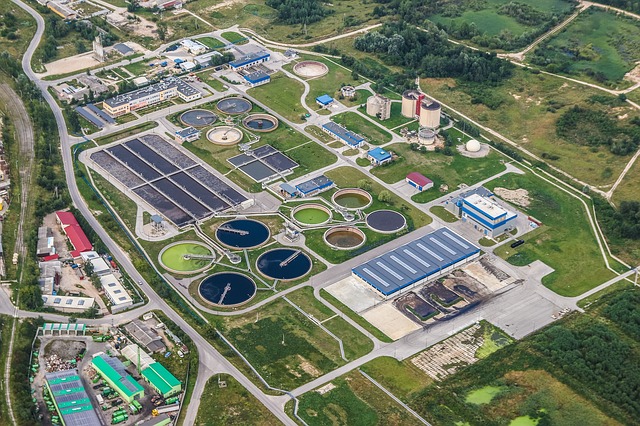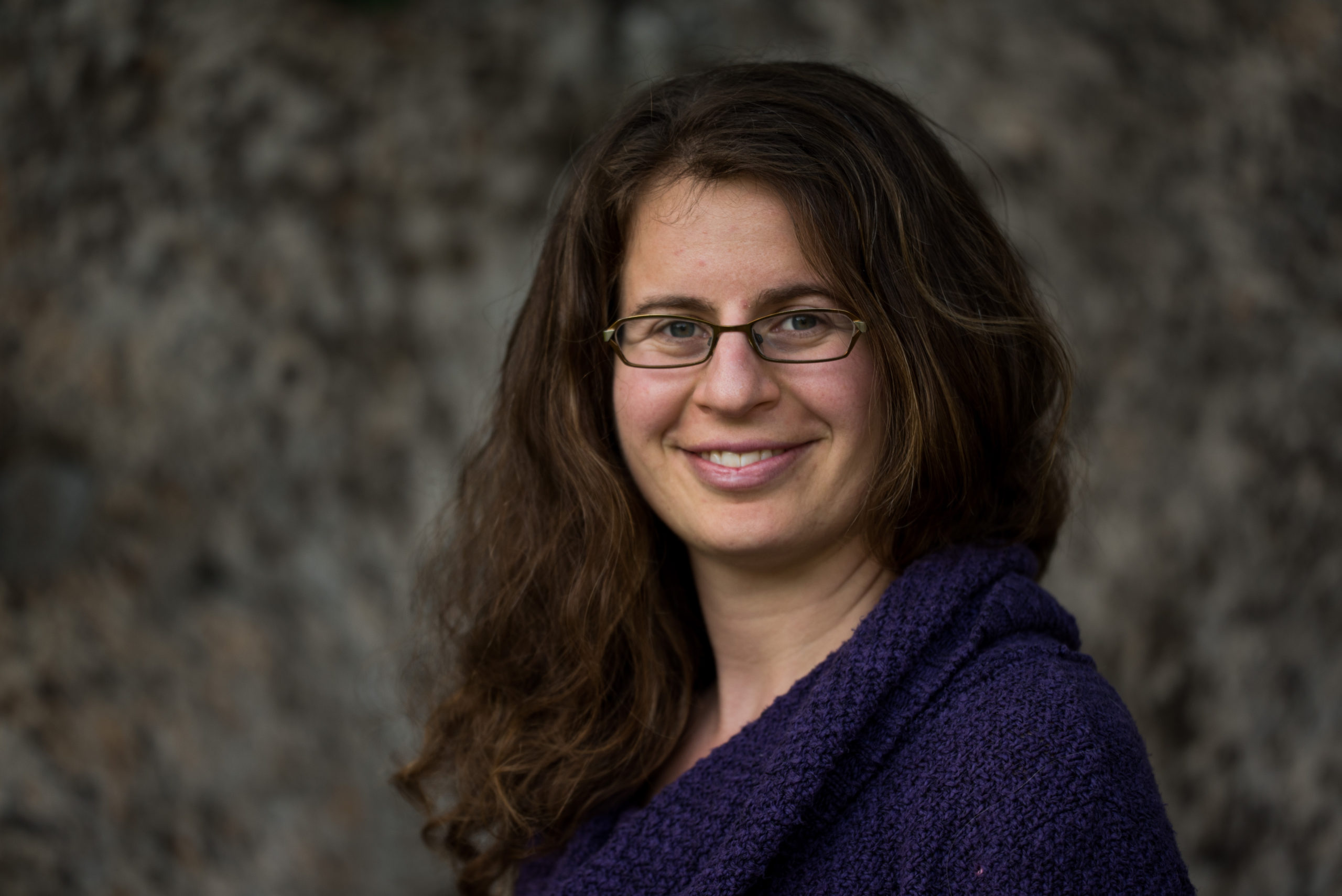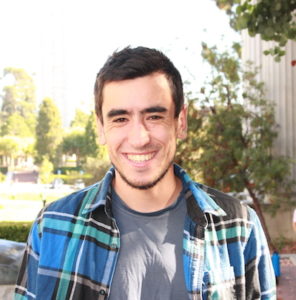
Wastewater epidemiology--monitoring wastewater for infectious diseases--may be a useful tool for tracking the spread of the SARS-CoV-2 virus which causes the disease COVID-19. Wastewater Epidemiology for the Bay Area (Covid-WEB) is an effort in the San Francisco Bay Area of California led by University of California at Berkeley (UC-Berkeley) professor Kara Nelson. In November, ESAL spoke to Covid-WEB team members Sasha Harris-Lovett, postdoctoral fellow and external relations specialist for the Berkeley Water Center, and Adrian Hinkle, third year Ph.D. Candidate in Civil and Environmental Engineering at UC-Berkeley, about wastewater epidemiology for SARS-CoV-2 and the Covid-WEB project. The discussion has been edited for length and clarity.
AG: How can wastewater epidemiology help us monitor the COVID-19 pandemic?
Harris-Lovett: For SARS-CoV-2, wastewater epidemiology is one way to get a snapshot of what's happening in the population...to see trends in the prevalence of infection. It's not biased by who goes in to get tested or who has access to healthcare. It covers everybody who uses a toilet that drains into the sewershed. Another advantage is that researchers around the world have seen the SARS-CoV-2 signal in wastewater increase before they see a rise in clinical cases.

Sasha Harris-Lovett, Ph.D.
AG: Is there any understanding of why wastewater is a leading indicator?
Harris-Lovett: There are a lot of theories. It might be that people wait until they feel really sick to get tested. It could also be that people start to shed the virus in their feces before they show symptoms or even if they never show symptoms. Or it could be that our clinical case testing had a really long turnaround time and not that many people were getting tested.
AG: What are potential benefits of the use of wastewater epidemiology in our public health response to COVID-19?
Hinkle: Wastewater epidemiology is a way to reach people who wouldn't be reached otherwise. Whether that's a neighborhood or a city where there aren't the resources to have free individual testing or whether it's with vulnerable populations, like in a prison where people are crammed into a small area, wastewater epidemiology will be a good way to see overall trends. At a more localized scale, [it can help] determine the presence or absence [of the virus].
Harris-Lovett: As we get the virus more under control, I think wastewater-based epidemiology for SARS-COV-2 will become more useful. We will be able to identify increases in the virus and know where to target resources for a vaccination campaign, or for testing, or for improved contact tracing.

Adrian Hinkle
AG: Can you tell us a little bit about wastewater and what you’re testing for in epidemiological monitoring?
Hinkle: Wastewater itself is a very complex thing. It's anything that goes down your toilet, anything that goes down your drain in the kitchen, and it usually includes some laundry water, shower water, dishwater, and in some places it can also include stormwater. Though it's mostly water, sewage also contains feces, urine, laundry detergent, food scraps, and other contaminants. The thing that we're looking for in wastewater is the virus RNA.
AG: In terms of sensitivity, how prevalent does COVID-19 need to be in a community before you can detect it?
Harris-Lovett: We detected a spike in the wastewater [in a housing community in Berkeley with a couple thousand residents] at the same time there was one known case. But that doesn't really answer your question, because we don't know how many people actually had coronavirus. We're still trying to quantify that by working with several facilities that are testing everybody that lives there on a regular basis.
Hinkle: But I think that gives you a general idea: a few sick people out of hundreds or a couple of thousand is generally what we're looking at.
AG: What are some of the technical challenges associated with trying to detect the SARS-CoV-2 RNA in wastewater?
Hinkle: The first challenge is simply extracting and concentrating the RNA so that we can do qPCR, which allows us to quantify the amount. Initially you have a large volume of wastewater. If we were to just stick that in the qPCR machine, we wouldn't detect anything. So we had to develop a method for extracting and concentrating the RNA. In the early stages of [the project], we ran into hurdles getting enough materials. We ended up developing our own homegrown method that used common reagents like table salt and ethanol.
Another one is the fact that wastewater is variable. The amount of human waste in sewage is constantly changing depending on how many people are showering, doing the laundry, or contributing to the sewage in different ways. Once we got that RNA extraction step down, we started focusing on controls to understand the amount of human feces in the sample. We need to know that to determine whether a trend [we might be seeing] in the amount of SARS-CoV-2 is from a change in the number of cases or just random variability. One technique we’re using is to treat other viruses that are naturally found in human waste as a control. If the amount of SARS-CoV-2 increases relative to the amounts of these other viruses, we know we’ve found a spike that represents a real increase in the number of cases.
AG: In addition to the technical challenges, are there any logistical challenges associated with implementing this kind of monitoring program?
Harris-Lovett: Currently, there's really limited lab capacity around the United States, and in the Bay Area, for this kind of wastewater testing. One reason why this group got a grant to build a lab at UC Berkeley was because lab capacity was a bottleneck.
Hinkle: We're working with about 20 wastewater facilities around the Bay Area. We ship little tubes with material in them to preserve the sample, and then they fill them with wastewater and send them back. The main limitation is having a quick turnaround. They need to be able to get us the samples within a day or so, and our process takes another day approximately. [Implementing] a similar regional effort anywhere in the world, in theory, just takes the ability to ship or drop off samples and the equipment for the testing.
AG: That’s a great reminder that this is a large, regional effort. Can you elaborate a bit on how the Covid-WEB project is structured?
Harris-Lovett: The whole project is guided by a steering committee that includes people from wastewater treatment agencies, local public health departments, the state department of public health, the state water board, and UC-Berkeley researchers. That group works together to decide how our lab capacity should be allocated. What that group has decided is that it should be up to the local public health departments. The local public health departments decide in their county where to, and how frequently to, take wastewater samples that will provide the data that's most useful for their decision-making.
AG: With so many government entities involved, have you encountered any regulatory issues?
Harris-Lovett: The biggest regulatory issue has actually been the permits around who can lift manhole [covers]. Many of our UC-Berkeley dorms or residences [whose wastewater we are monitoring as part of our project] are served by manholes that are on City of Berkeley property. UC-Berkeley facility staff have to get a special permit to be able to take sample wastewater samples there. Everyone was supportive [and having UC-Berkeley facility staff take the samples was actually a big help to the City], but working the permit through the bureaucratic channels took a while.
AG: I want to go back to an earlier topic. You mentioned that public health departments are making decisions about where to test wastewater based on which data would be most useful. I understand that you are only sharing your data directly with public health departments and not making them broadly available. This may surprise some people with scientific research backgrounds. Can you provide a little more context for our readers about this decision?
Harris-Lovett: The wastewater data is designed to be considered in tandem with case data and contact tracing data from each sewershed. In some cases this is confidential to the public health department. Interpreting the wastewater data also requires quite a bit of background and context about how to read the SARS-CoV-2 concentrations in relation to fecal indicators in the sewage and in relation to the laboratory QA/QC procedures. So at this point, we’re sending the raw data to the public health departments and letting them decide whether and how to translate the results to the public.
Also, this is a really new data stream for public health departments. So there are challenges associated with understanding what to do with the data. What kinds of questions you can ask that wastewater-based data could help answer. And, as Adrian mentioned earlier, there's still ongoing research about the variability. We need to understand that to put a good confidence interval around each data point...to know how much you can trust each data point.
Hinkle: Of course, we're working on publications to share the data, and our methods have been published online.
AG: I’d like to talk a bit more about the research aspects of this work. We’ve been talking about one method that you developed at UC-Berkeley. Do you have any familiarity with other approaches that are being explored elsewhere?
Hinkle: Back in August, we participated in an inter-laboratory comparison study. It compared about 30 different methods that were developed both at universities and commercial labs. There are many things that you can vary at each step. For example, different filtration and concentration methods. The study was important for comparing which methods have which strengths.
AG: Can you elaborate on how one might think about the importance of the relative strengths of various techniques?
Hinkle: I think a method needs to have at least two of these factors: quick, affordable, and reliable. If it's quick and cheap, you can repeat it a bunch of times until you have high confidence in the results. [Testing] time is important because SARS-CoV-2 degrades over time, and, more importantly, we need to get results quick enough that the public health people can do something about it.
AG: Thinking beyond SARS-CoV-2, do you see the work that you're doing now increasing interest in using wastewater epidemiology more generally? Maybe for emerging diseases and pathogens?
Hinkle: There's a ton of potential implications. The first thing that will come out of this is much better methods. In California and elsewhere, there's a big push toward potable reuse, reusing wastewater for drinking water. If we can monitor pathogens in wastewater, then it will inform how much we need to treat it before reusing it. A second example is for other pathogens, whether the annual flu or a reappearance of this coronavirus. Hopefully a few places will implement this permanently to have a general sense for what kinds of pathogens we're seeing.
AG: Do you have any advice for people with STEM backgrounds who might want to get more involved with local wastewater epidemiology efforts near them?
Hinkle: I want to note that it's not just environmental engineers who are working on this. We've had a ton of collaborators in different departments who we normally wouldn't work with. For example, people in biology, microbiology and statistics. It has been a broad effort.
AG: Any final thoughts you’d like to share?
Harris-Lovett: I just want to add that the group working on this is just regular--brilliant--graduate students and professors who dropped almost everything that they were working on to address the pandemic. We found the same thing with the wastewater agencies and the public health departments. It’s encouraging how people are so willing to go above and beyond what's expected to try to help the common good. I'm really appreciative that I get to interact with people who are so dedicated and passionate about trying to make the world better.